6 Ingredient Fish Cakes
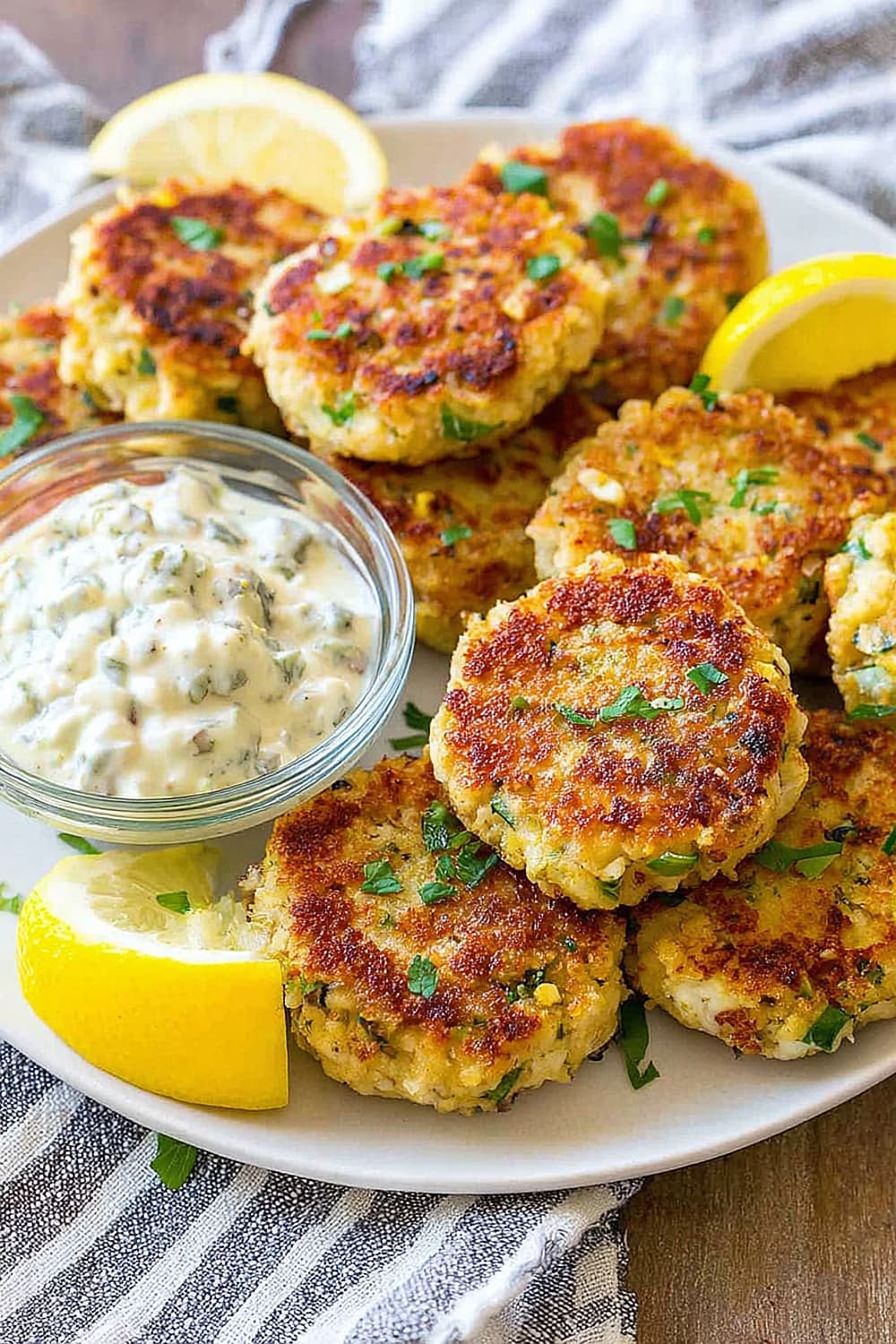
These fish cakes are about to become your secret weapon for looking like you actually know what you’re doing in the kitchen.
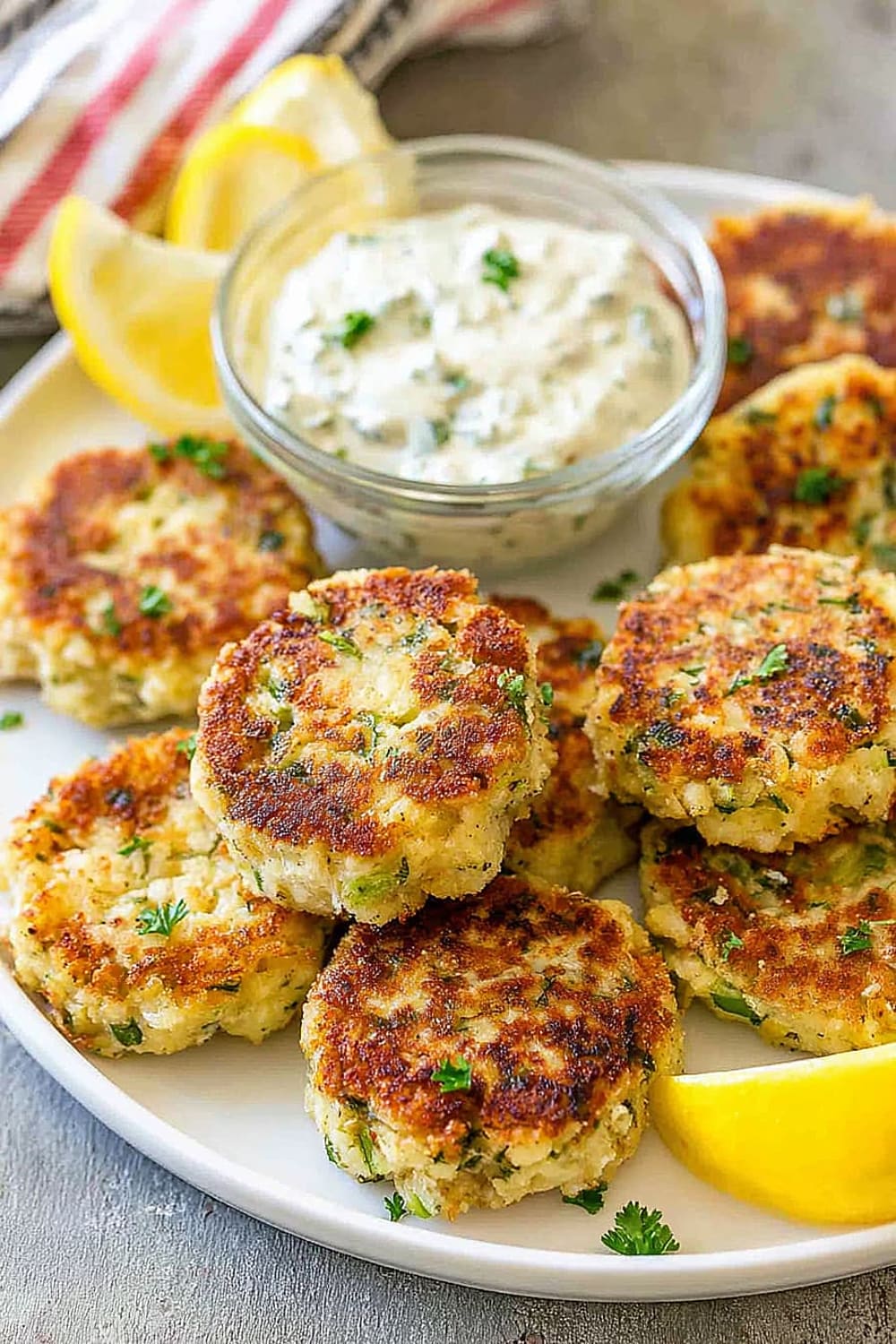
Crispy golden exteriors give way to flaky, seasoned fish that’s been perfectly balanced with just the right amount of Old Bay and fresh green onion brightness.
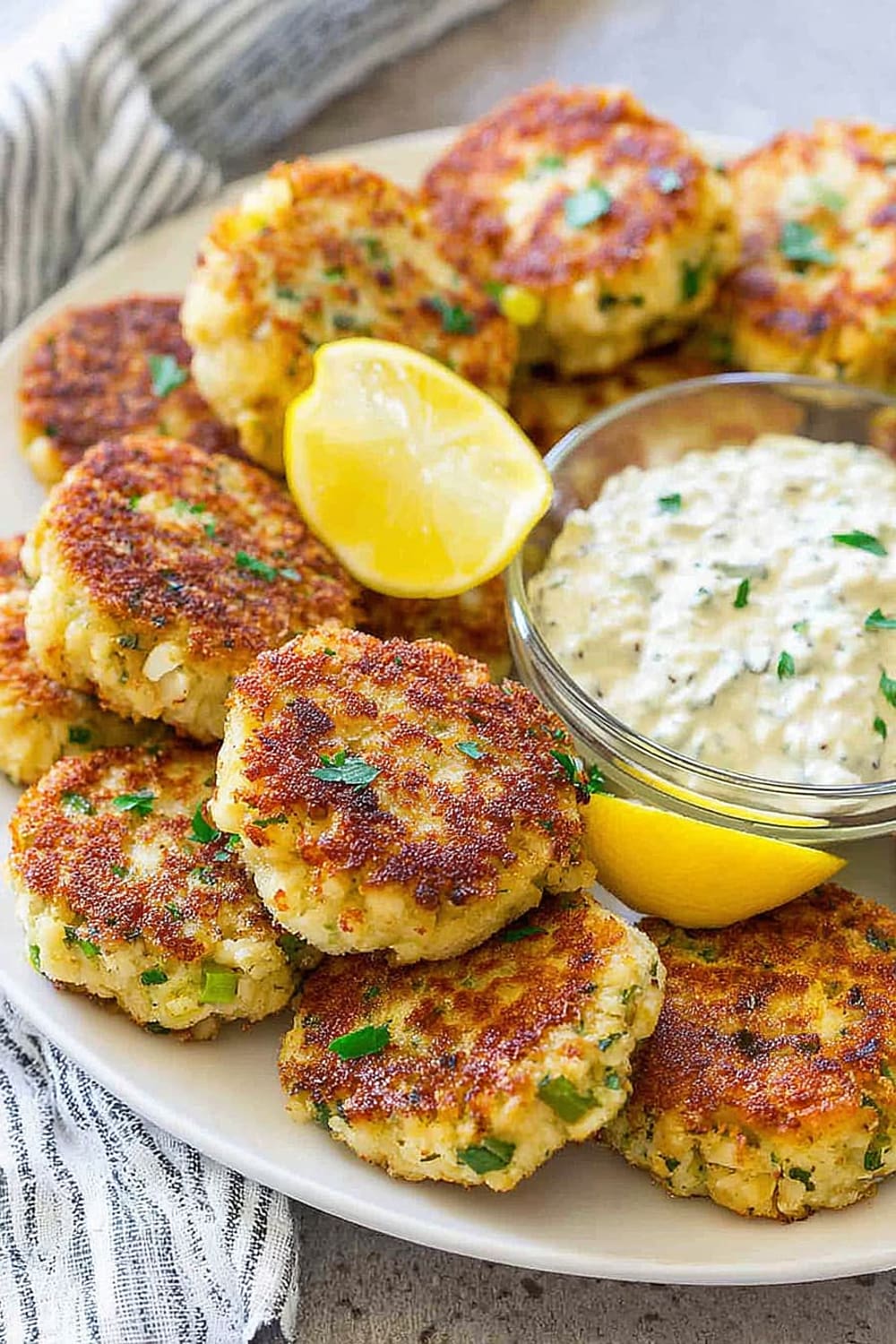
The beauty of this recipe lies in its simplicity – six ingredients that work together like they were meant to be best friends forever.
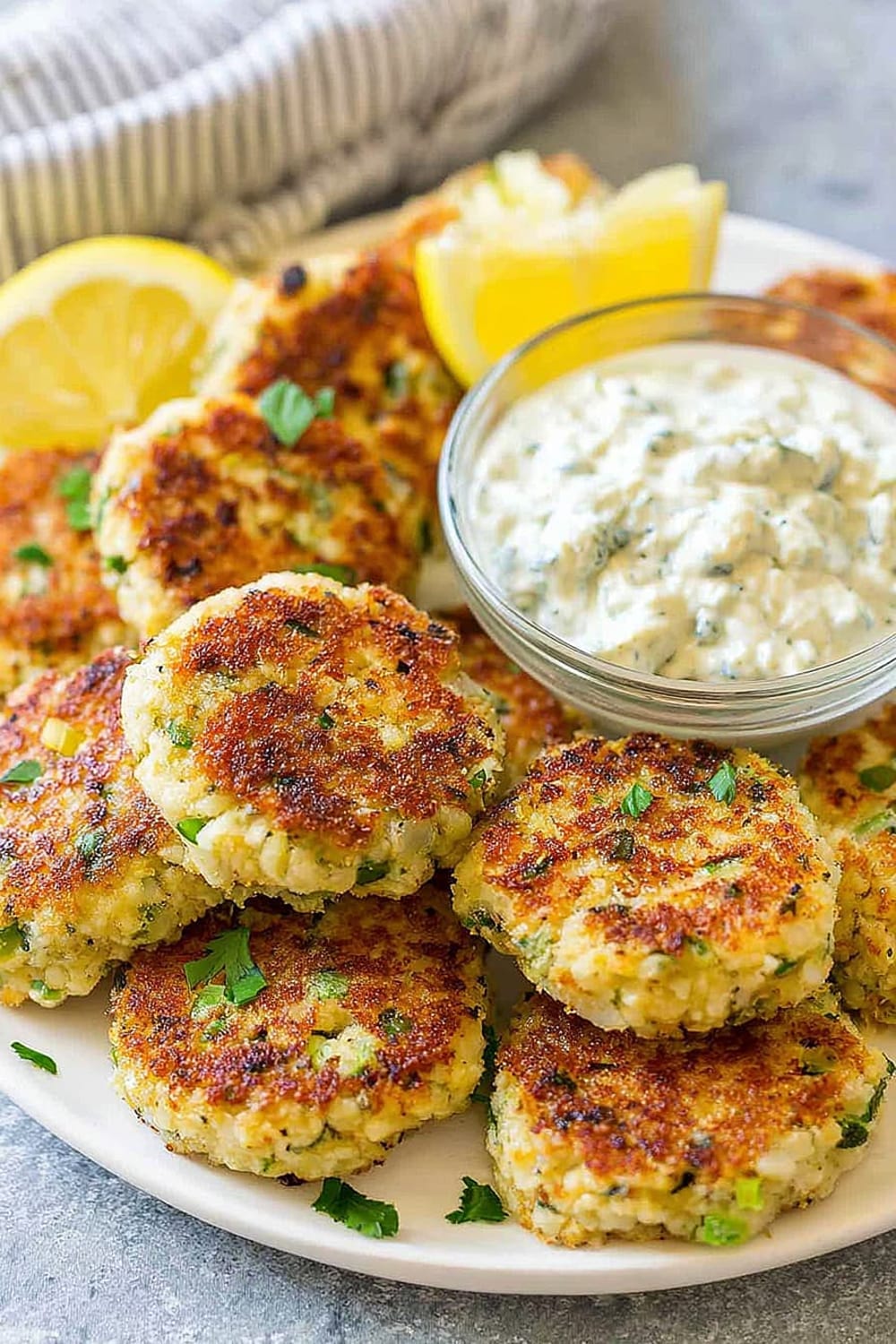
Each bite delivers that satisfying crunch followed by tender, flavorful fish that tastes like you spent hours perfecting the seasoning blend.
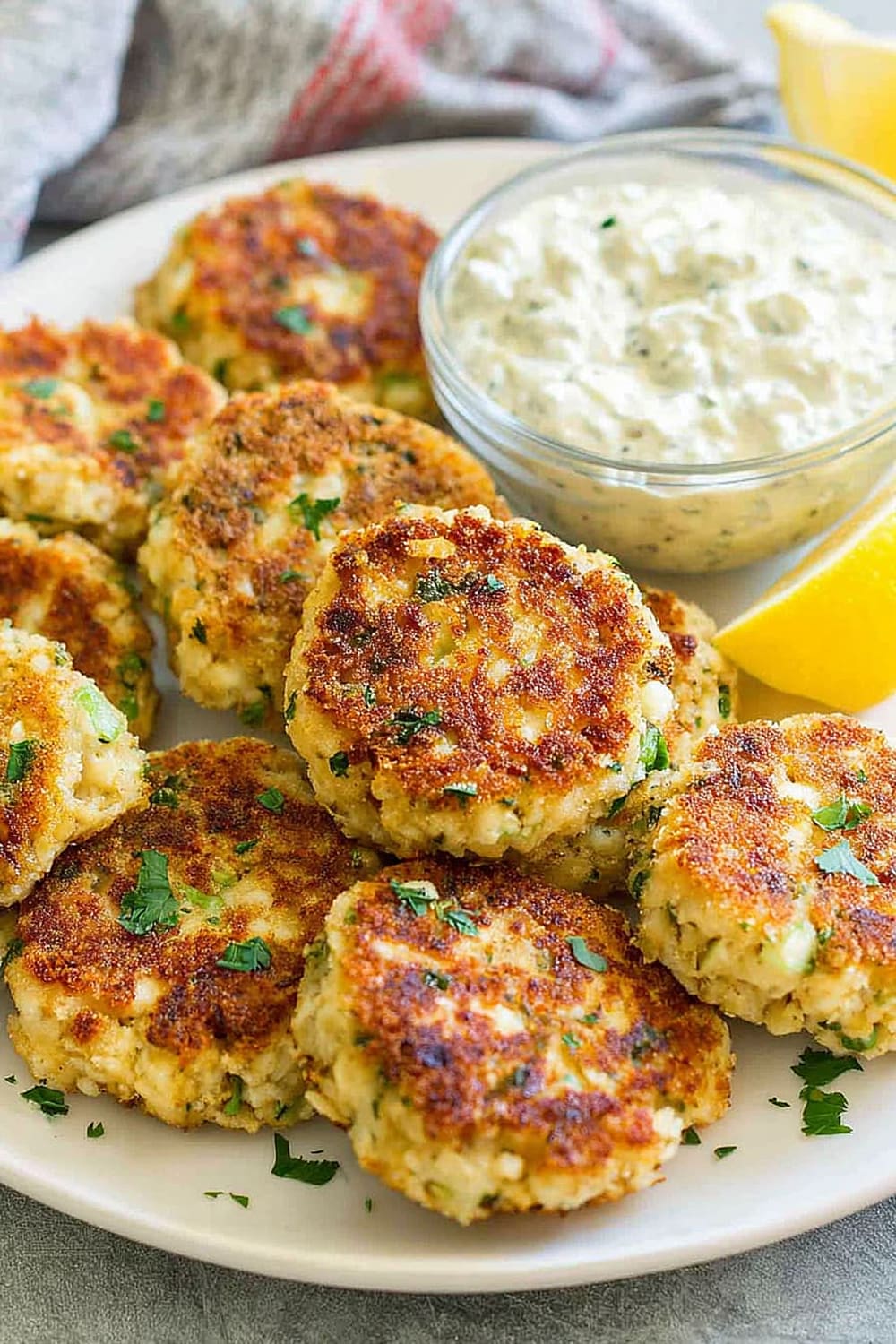
Whether you’re serving these as elegant appetizers for company or making them the star of a casual weeknight dinner, they deliver restaurant-quality results without the restaurant-level stress.
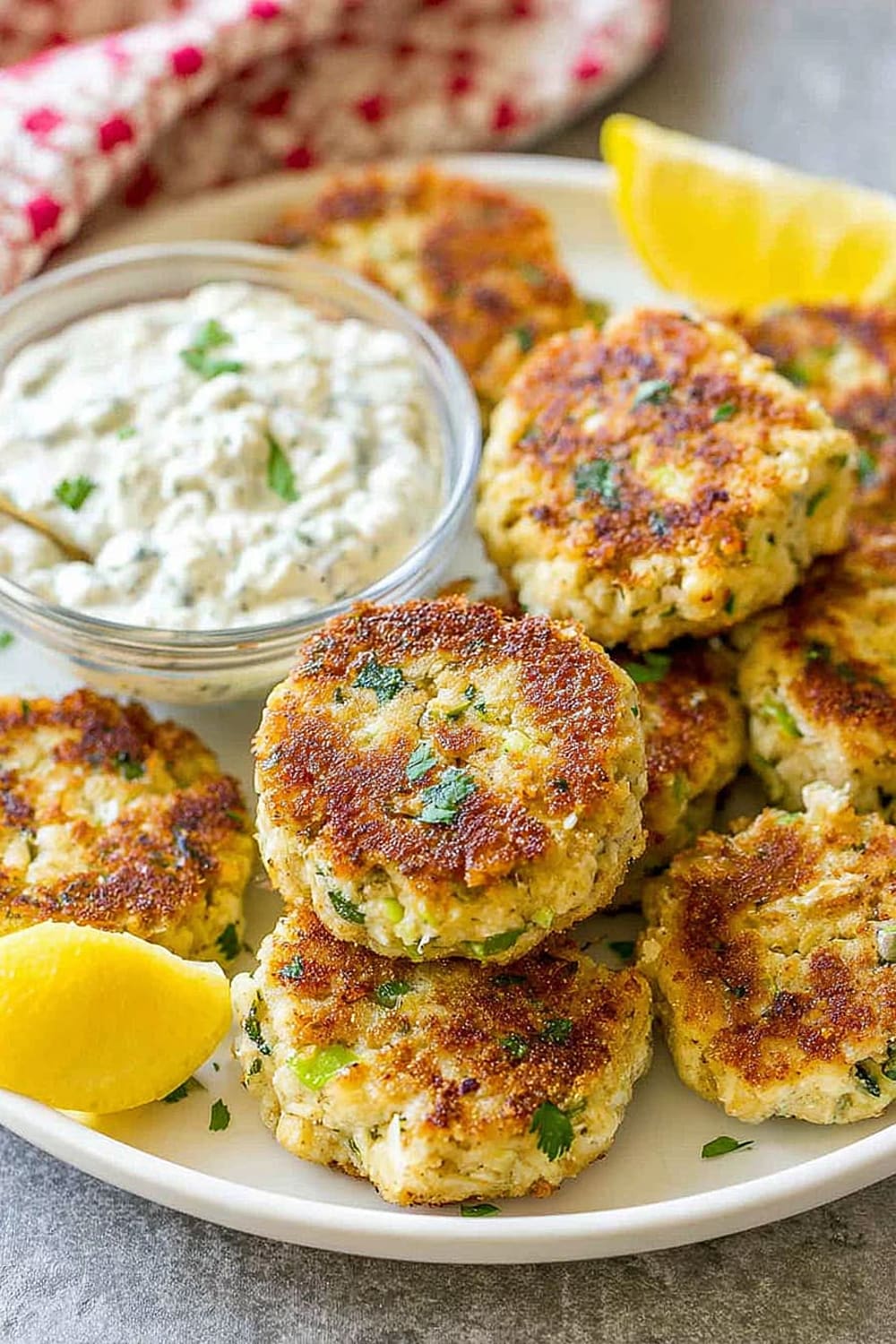
Best part? You probably have most of these ingredients sitting in your kitchen right now, just waiting to be transformed into something absolutely delicious.
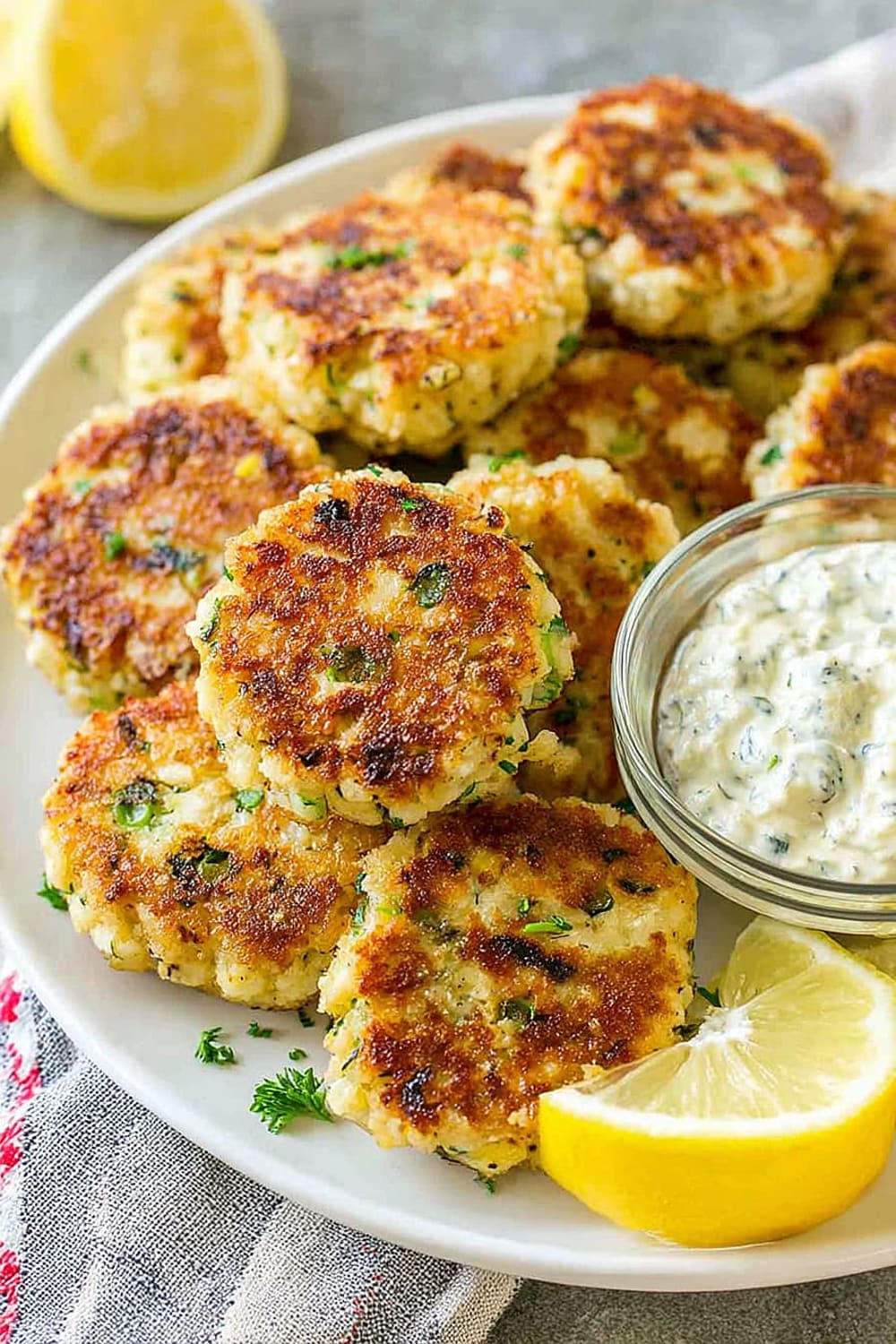
Ingredients
For the Fish Cakes
- 1 pound cooked cod, flaked
- 3 /4 cup panko breadcrumbs
- 2 large eggs, beaten
- 1 /4 cup green onions, thinly sliced
- 1 tablespoon fresh lemon juice
- 1 /2 tablespoon Old Bay seasoning
- 1 /2 teaspoon coarse salt
- 1 /4 teaspoon freshly ground black pepper
- Cooking oil for frying (vegetable or canola oil work best)
Instructions
Prepare the Mixture
- 1 In a large mixing bowl, combine the 1 pound flaked cooked cod with 3/4 cup panko breadcrumbs, ensuring the fish is broken into bite-sized pieces but not completely shredded.
- 2 Add the 2 beaten eggs, 1/4 cup thinly sliced green onions, 1 tablespoon lemon juice, 1/2 tablespoon Old Bay seasoning, 1/2 teaspoon coarse salt, and 1/4 teaspoon black pepper to the bowl.
- 3 Using a fork, gently stir all ingredients together until evenly combined, breaking apart any larger fish pieces while being careful not to overmix – you want the mixture to hold together but still have some texture from the fish flakes.
Shape the Fish Cakes
- 4 Using your hands or a small scoop, portion the mixture into 16 equal patties using approximately 2 tablespoons of mixture for each cake, gently pressing them together so they hold their shape without being too compact.
Cook the Fish Cakes
- 5 Heat a large cast iron skillet or heavy-bottomed pan over medium-high heat and add enough cooking oil to coat the bottom of the pan – about 2-3 tablespoons should do it.
- 6 Test the oil temperature by dropping a small piece of the mixture into the pan – it should sizzle immediately but not violently, indicating the oil is at the perfect 350°F (175°C) temperature.
- 7 Working in batches to avoid overcrowding, carefully place 4-6 fish cakes in the hot oil, leaving space between each one for even browning and easy flipping.
- 8 Fry the fish cakes for 3 minutes on the first side without moving them, allowing a golden-brown crust to develop, then flip carefully with a thin spatula and cook for another 3 minutes until both sides are crispy and golden brown.
- 9 Transfer cooked fish cakes to a paper towel-lined plate to drain excess oil, and repeat the frying process with remaining batches, adding more oil to the pan as needed.
Recommended Equipment and Kitchen Tools
Essential Tools (for best results)
- Large mixing bowl – Gives you plenty of room to combine ingredients without making a mess, and a wide bowl makes it easier to break apart the fish evenly
- Cast iron skillet – Provides superior heat retention and creates the perfect golden crust, though any heavy-bottomed pan will work well
- Thin metal spatula – Essential for flipping delicate fish cakes without breaking them apart; silicone spatulas are too thick for this job
- Instant-read thermometer – Takes the guesswork out of oil temperature, ensuring perfectly crispy exteriors every time
Helpful Upgrades
- Kitchen scale – For perfectly portioned fish cakes, weigh out 1.5-ounce portions instead of eyeballing tablespoon measurements
- Small ice cream scoop – Creates uniform fish cakes faster than hand-shaping, and the release mechanism helps maintain consistent size
- Splatter screen – Keeps your stovetop clean while allowing steam to escape, preventing soggy fish cakes
Nice-to-Have Options
- Wire cooling rack – Elevates fish cakes above paper towels for better drainage and crispier bottoms
- Digital probe thermometer – Clips to pan edge for continuous oil temperature monitoring during batch cooking
Recipe Variations and Dietary Modifications
Gluten-Free Adaptation
- Replace panko breadcrumbs with 3/4 cup gluten-free panko or finely crushed gluten-free crackers
- Almond flour works as a lower-carb alternative, though you’ll need only 1/2 cup as it’s denser than breadcrumbs
- Add an extra egg if mixture seems too loose with alternative binding agents
Different Fish Options
- Salmon – Creates richer, more flavorful cakes with beautiful pink color
- Crab meat – Substitute pound-for-pound for an upscale seafood cake experience
- Leftover white fish – Halibut, tilapia, or mahi-mahi all work perfectly with this base recipe
Flavor Variations
- Mediterranean style – Replace Old Bay with dried oregano, add minced garlic and fresh dill
- Asian-inspired – Swap green onions for chopped cilantro, add fresh ginger and a dash of sesame oil
- Cajun twist – Use Cajun seasoning instead of Old Bay, add finely diced bell peppers
- Herb-crusted – Mix fresh parsley, chives, and tarragon into the panko before combining
Baked Version
- Preheat oven to 425°F (220°C) and brush fish cakes with melted butter or oil
- Bake for 12-15 minutes, flipping once halfway through cooking time
Nutritional Information and Health Benefits
Key Nutritional Highlights
Each fish cake contains approximately 85-95 calories, making them a light yet satisfying option for appetizers or part of a balanced meal. The recipe provides 12-14 grams of high-quality complete protein per serving, along with 4-5 grams of carbohydrates from the panko breadcrumbs. The total fat content is moderate at 3-4 grams per cake, primarily from the eggs and minimal cooking oil absorption.
Health Benefits of Main Ingredients
Cod is an excellent source of lean protein and provides significant amounts of vitamin B12, essential for nervous system function and red blood cell formation. The fish also contains phosphorus for bone health and selenium, a powerful antioxidant that supports immune function. Eggs contribute choline for brain health and additional high-quality protein with all essential amino acids. Green onions provide vitamin K for bone health and folate for cellular function, while lemon juice adds vitamin C and helps enhance iron absorption from other ingredients.
Dietary Considerations
This recipe is naturally gluten-free when made with certified gluten-free breadcrumbs, dairy-free, and suitable for pescatarian diets. Each serving provides approximately 8-10% of daily protein needs for adults, making it an excellent choice for those focusing on lean protein intake while managing calories.
Smart Swaps and Ingredient Substitutions
Common Substitutions:
- Cooked cod → Canned salmon (drained), leftover grilled fish, or imitation crab meat in equal amounts
- Panko breadcrumbs → Regular breadcrumbs (3/4 cup), crushed crackers (2/3 cup), or ground oats (1/2 cup)
- Fresh green onions → Chives (2 tablespoons chopped), regular yellow onion (2 tablespoons minced), or shallots (1 tablespoon minced)
- Old Bay seasoning → Paprika plus celery seed (1/2 tablespoon total) or seafood seasoning blend
Budget-Friendly Swaps:
- Fresh cod → Frozen cod fillets (thaw and cook first), or canned tuna in water (drained thoroughly)
- Panko breadcrumbs → Homemade breadcrumbs from day-old bread, pulsed in food processor
- Fresh lemon juice → Bottled lemon juice (1 tablespoon) or white wine vinegar (2 teaspoons)
Pantry Emergency Substitutions:
- Eggs → 3 tablespoons mayonnaise or 2 tablespoons ground flaxseed mixed with 6 tablespoons water (let sit 5 minutes)
- Cooking oil → Butter for frying (watch heat carefully to prevent burning) or bake instead of frying
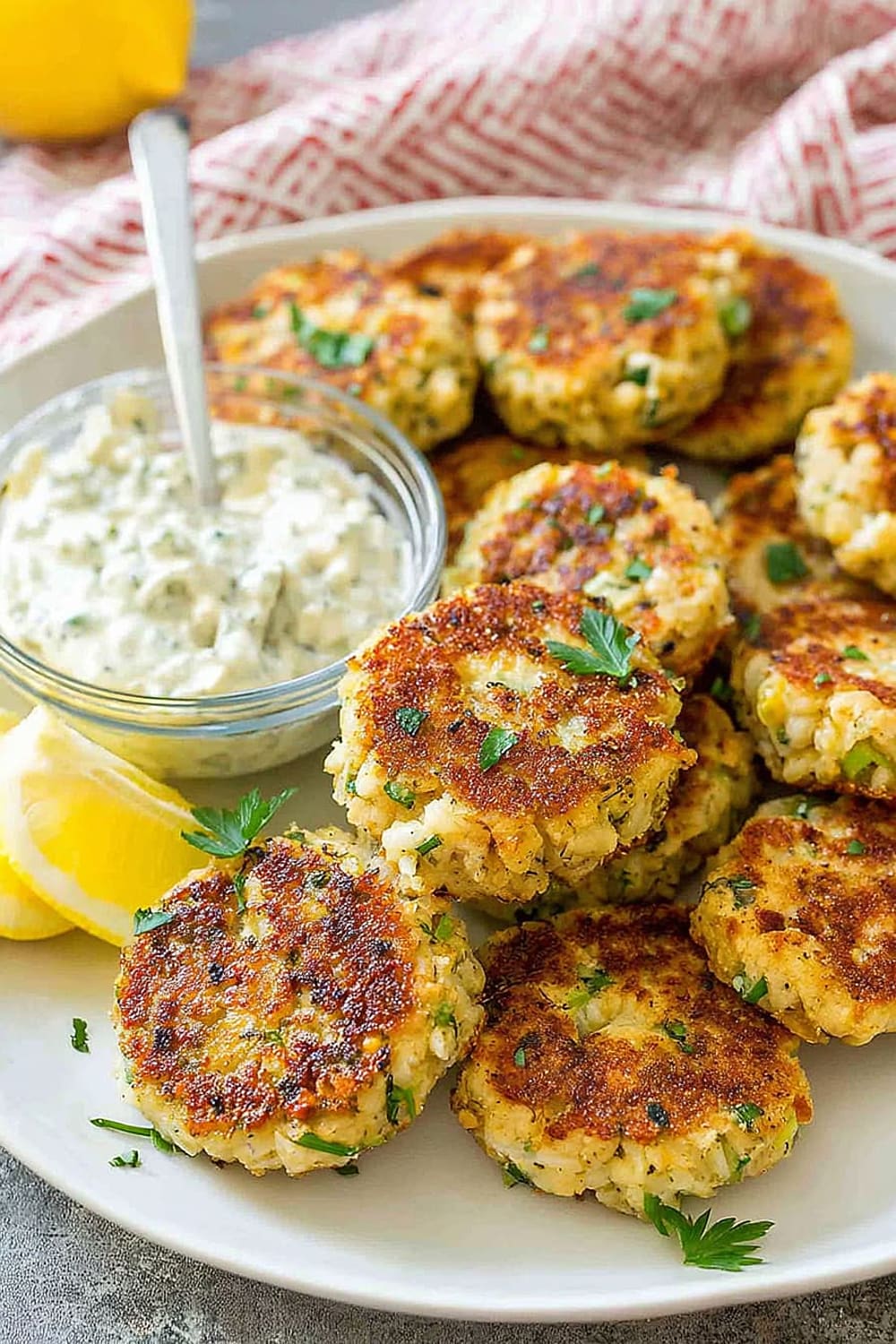
Make It Diabetes-Friendly
Carb Reduction Strategies:
- Replace 3/4 cup panko breadcrumbs with 1/2 cup almond flour or ground pork rinds for significant carb reduction
- Use 1/3 cup coconut flour instead of panko, but add one extra egg as coconut flour is very absorbent
- Substitute crushed nuts (1/2 cup pecans or walnuts) for a crunchy, low-carb binding agent
Portion & Timing Tips:
- Each standard fish cake contains approximately 4-5 grams of carbohydrates from panko breadcrumbs
- With almond flour substitution, carbs drop to approximately 1-2 grams per cake
- Serve 2-3 fish cakes as an appetizer or 4-5 cakes as a main course paired with non-starchy vegetables
- The high protein content (12-14 grams per cake) helps stabilize blood sugar when eaten as part of balanced meals
Cooking Method Modifications:
- Baking option eliminates added fats from frying oil, keeping calories and carbs lower
- Air frying at 375°F (190°C) for 8-10 minutes creates crispy results without oil
- Pan-frying in avocado oil provides healthy monounsaturated fats that don’t spike blood sugar
Total Carb Reduction: Using almond flour instead of panko reduces total carbs by approximately 65-70% per serving.
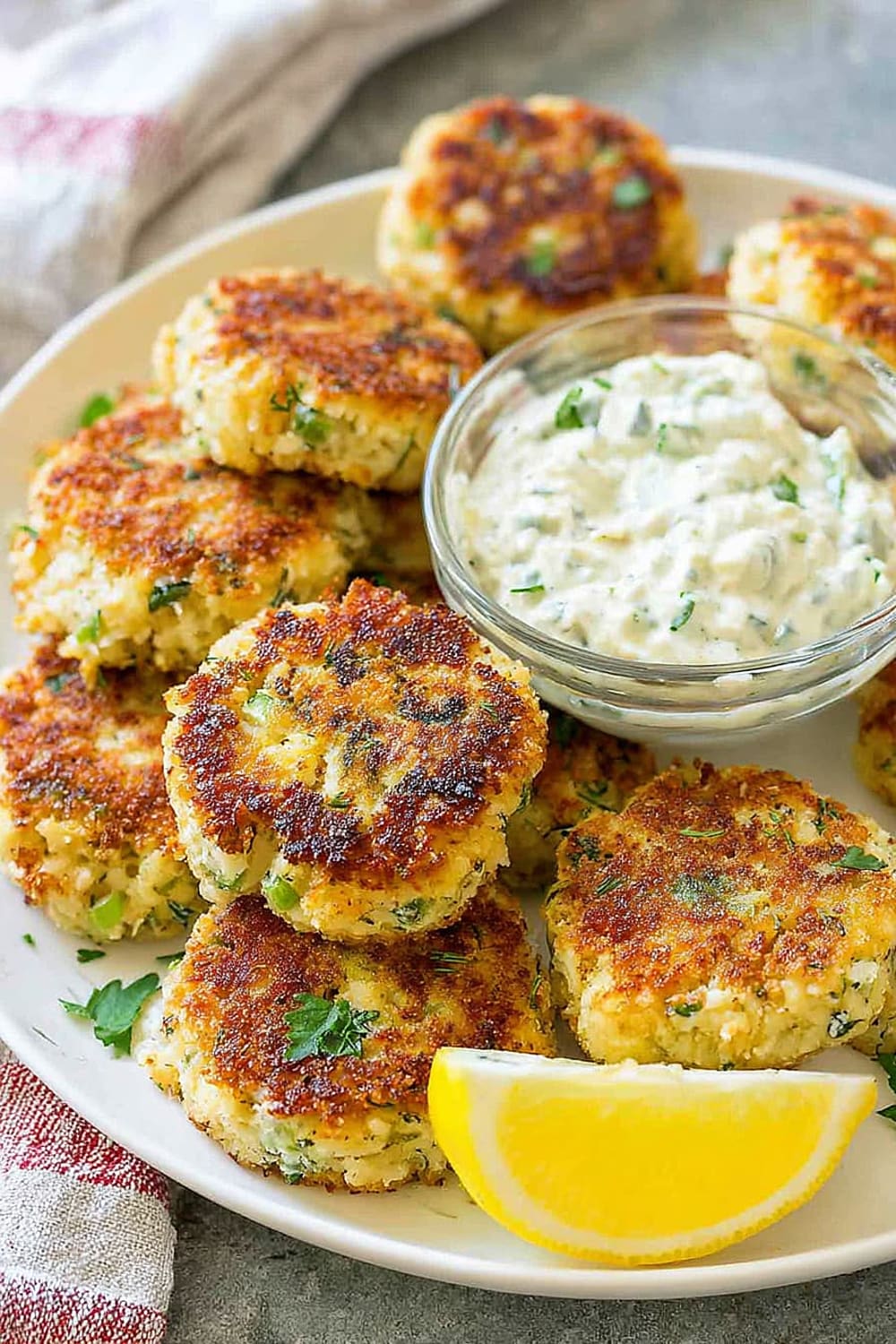
Perfect Pairing Suggestions
Beverage Pairings
A crisp Sauvignon Blanc or Pinot Grigio complements the delicate fish flavors without overwhelming the Old Bay seasoning, while a light wheat beer or pilsner provides a refreshing contrast to the crispy texture. For non-alcoholic options, sparkling water with lemon or unsweetened iced tea cleanse the palate between bites, and cucumber mint water adds a spa-like freshness that enhances the seafood experience.
Side Dish Recommendations
Coleslaw with a tangy vinaigrette provides crunchy contrast and cuts through any richness from frying, while roasted asparagus or steamed broccoli adds color and nutrients to the plate. Garlic mashed cauliflower creates a low-carb alternative to traditional potatoes, and a mixed green salad with lemon vinaigrette ties together the fresh flavors. Sweet potato fries offer a healthier alternative to regular fries and complement the seafood beautifully.
Complete Meal Ideas
Start with a light soup like tomato basil or butternut squash, serve the fish cakes as the main course with quinoa pilaf and sautéed spinach, then finish with lemon sorbet or fresh berries for a well-balanced, restaurant-quality meal that showcases the fish cakes without competing flavors.
Pro Tips and Troubleshooting
Professional Techniques
Chill formed fish cakes in the refrigerator for 30 minutes before cooking – this helps them hold together better during frying and prevents them from falling apart in the pan. Test your first fish cake as a “tester” to adjust seasoning in the remaining mixture if needed. Keep oil temperature consistent by adjusting heat between batches, and don’t flip the cakes until they naturally release from the pan surface.
Common Mistake Prevention
Avoid overmixing the fish mixture, which can create dense, tough cakes instead of light, flaky ones. Don’t overcrowd the pan, as this lowers oil temperature and creates soggy rather than crispy exteriors. Never press down on fish cakes with your spatula while cooking – this squeezes out moisture and creates dry, compressed results.
Storage and Make-Ahead
Formed raw fish cakes can be refrigerated for up to 24 hours before cooking, or frozen for up to 3 months on a parchment-lined baking sheet before transferring to freezer bags. Cooked fish cakes keep in the refrigerator for 3-4 days and reheat beautifully in a 350°F (175°C) oven for 8-10 minutes. For meal prep, cook completely, cool, and freeze with parchment paper between layers.
Perfect fish cakes are all about balance – the right ratio of fish to binding ingredients, proper oil temperature, and just enough seasoning to enhance without overpowering the delicate seafood flavor. With these six simple ingredients and a few key techniques, you’ll be creating restaurant-quality results that’ll have everyone asking for your secret recipe.